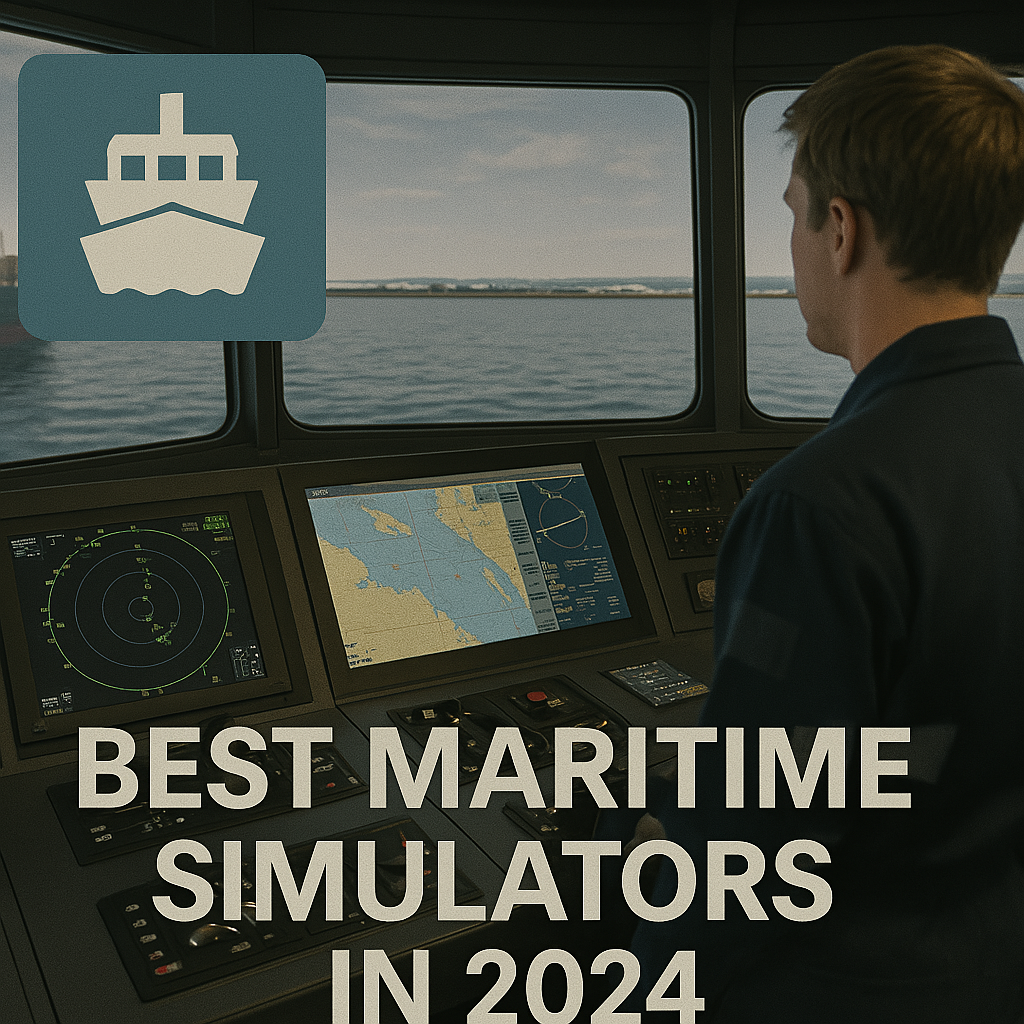Discover the best maritime simulators in 2024 for bridge, engine room, and cargo operations. Explore cutting-edge tools that meet STCW standards and enhance maritime training worldwide.
🧭 Introduction
How do you train cadets to dock a mega container ship, manage an engine room blackout, or respond to a man-overboard emergency—without ever leaving land?
The answer lies in maritime simulators, which have become essential tools for modern seafarer training. In 2024, simulation technology has advanced dramatically, providing realistic, immersive, and STCW-compliant experiences for maritime students, ship officers, and training institutes alike.
Whether you’re a cadet preparing for STCW exams, a maritime educator, or a shipping company executive, this guide to the best maritime simulators in 2024 will help you navigate the top options on the market.
🔍 What Are Maritime Simulators?
Maritime simulators are advanced training systems that replicate real-world scenarios on board ships. They allow learners to safely practice:
-
Navigation and bridge operations
-
Engine room procedures
-
Cargo handling and tank operations
-
Emergency response drills
-
Communications and teamwork
Simulators can be:
-
Full Mission Simulators (FMS) – replicate an entire shipboard system
-
Part-task or Desktop Simulators – focus on specific functions
-
Virtual Reality (VR) Systems – immersive training using headsets and motion tracking
📌 Keyword Focus: High-ranking search terms include “best maritime simulator 2024,” “bridge simulation training,” and “engine room simulator software.”
🏆 Top Maritime Simulators in 2024
1. Kongsberg Digital – K-Sim Suite
🌐 https://www.kongsberg.com/digital/
Specialty: Full mission bridge, engine room, cargo, and dynamic positioning simulators.
Key Features:
-
Advanced hydrodynamic modelling
-
STCW and IMO-compliant training scenarios
-
Integrated VR modules
-
AI-based assessment tools
-
Real ship models and environmental realism
Best For:
Maritime academies and shipping companies seeking high-fidelity, scalable simulation systems.
💬 Expert Insight: “K-Sim offers unmatched realism—ideal for STCW bridge and engine resource management.”
2. Wärtsilä Transas – Navi-Trainer Professional 5000
🌐 https://www.wartsila.com/marine/products/simulation-and-training
Specialty: ECDIS, GMDSS, bridge team management, and cargo-handling simulation.
Key Features:
-
Realistic weather conditions and sea states
-
Integrated with NaviSailor ECDIS for real-world interface training
-
Tanker, LNG, RoRo, and bulk carrier scenarios
-
VR-based tugboat handling module
Best For:
Training centers focused on cargo operations, ECDIS, and navigation compliance.
🚢 User Review: “Navi-Trainer has helped reduce bridge navigation errors in our cadet programs by over 40%.”
3. VSTEP NAUTIS Simulator
🌐 https://www.vstepsimulation.com/
Specialty: Affordable, modular bridge simulators for port authorities, tugboats, and training institutes.
Key Features:
-
Modular and portable bridge consoles
-
Custom vessel and port models
-
Compatible with VR and cloud-based learning
-
Environmental impact simulation (green route training)
Best For:
Small to mid-size academies, tug operators, and pilot training.
💡 Fact: NAUTIS is widely used in developing countries due to its cost-effectiveness and flexibility.
4. MARINSYS Engine Room Simulators
🌐 https://www.marinsys.com.my/
Specialty: Engine control room (ECR) and machinery fault simulation for marine engineers.
Key Features:
-
Simulates diesel engine, boilers, pumps, compressors, alarms
-
Emergency handling: blackout, fire, flooding
-
Custom panel configurations
-
Instructor station with performance analytics
Best For:
Marine engineering institutes, STCW ERRM courses, and onboard technical drills.
🧰 Quote: “MARINSYS builds confidence by letting students practice machinery faults without consequences.”
5. Kongsberg VR Training Solutions
🌐 https://www.kongsberg.com/digital
Specialty: Fully immersive VR for lifeboat launching, engine room familiarization, and firefighting.
Key Features:
-
360° movement in virtual ship environments
-
Interactive equipment handling
-
Built-in STCW modules
-
Multiplayer functionality for teamwork
Best For:
Institutes integrating VR for STCW Basic Safety and advanced firefighting courses.
🎓 Instructor’s Note: “With Kongsberg VR, students react faster in real drills thanks to muscle memory.”
⚙️ Applications & Real-World Use
Used For:
-
STCW Certification Training
-
Engine Room Resource Management (ERRM)
-
Bridge Resource Management (BRM)
-
Manoeuvring and Emergency Drills
-
Cargo Handling for Tankers and LNG Carriers
Who Uses These Simulators?
-
National and private maritime academies
-
Naval forces and coast guards
-
Shipping and oil & gas companies
-
Port authorities and tugboat operators
📊 Stat: As of 2024, over 70% of STCW-approved maritime training centers worldwide use simulation as part of their certification pathway.
🌐 Latest Trends & Innovations
| Trend | Impact |
|---|---|
| AI-driven feedback systems | Tracks trainee behavior and provides personalized coaching |
| Cloud-based simulation | Remote access to STCW modules for onboard or home-based learning |
| Digital twin integration | Mirrors real ship systems for company-specific operational training |
| VR + haptic feedback | Enables tactile sensations like valve turning and firefighting actions |
| Gamified assessments | Increases engagement, motivation, and retention among trainees |
FAQs: People Also Ask
What is the best maritime simulator for STCW training?
Kongsberg K-Sim and Wärtsilä Transas are widely regarded as the top choices for full mission STCW-compliant training.
Can maritime simulators be used for remote learning?
Yes. Cloud-based simulators now allow remote STCW learning, ideal for cadets at sea or in remote regions.
Are VR maritime simulators effective?
Yes. Studies show VR-enhanced maritime training improves retention and reaction time compared to traditional classroom methods.
How much do maritime simulators cost?
Costs range from €5,000 for desktop simulators to over €500,000 for full mission systems. Many vendors offer modular or subscription-based pricing.
✅ Conclusion: Navigating the Future with Simulation
The best maritime simulators in 2024 combine technology, realism, and regulatory compliance to ensure that tomorrow’s seafarers are trained, tested, and trusted. Whether you’re training for bridge, engine, or emergency roles, simulation offers a safe, cost-effective, and scalable solution.
⚓ Call to Action: Explore partnerships with certified simulator vendors, upgrade your training center’s digital tools, or try cloud-based trials. Simulation isn’t the future—it’s already onboard.



Spot on with this write-up, I absolutely believe this webb site needs a lot more attention. I’ll probably be back again to read more, thanks for the advice!